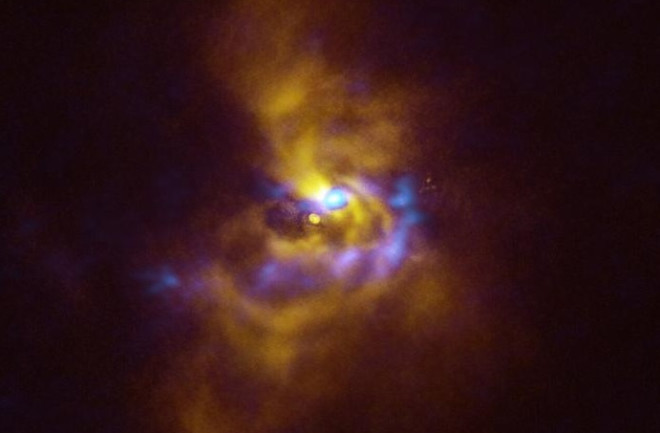Planets are formed through the accumulation of dust and gas over millions of years. Two popular models explain this process: the accretion model and the gravitational instability model. In the accretion model, particles collide and stick together gradually, while the gravitational instability model involves a more decisive event. In this model, dust and fragments gather in an area until they experience a gravitational collapse. The force pulling them together becomes stronger than whatever is keeping them apart, leading to the formation of a new planet.
Recently, astronomers may have found direct evidence supporting the gravitational instability model. On July 25, 2023, the European Southern Observatory’s Very Large Telescope captured an image showing a massive vortex of matter orbiting a young and unstable star. The spiral arms of the vortex extend beyond the width of our solar system and contain clumps of mass. This intriguing star system is located 5,000 light-years away in the Monoceros constellation, resembling a unicorn.
Scientists have been monitoring this young star since it experienced a significant increase in brightness in 2014. The recent discovery is significant as it’s the first time clumps around a young star have been detected, which have the potential to develop into giant planets. Alice Zurlo, a researcher at the Universidad Diego Portales, described the finding as captivating.
To further investigate the spiral arms, the team of astronomers analyzed archived observations made by the Atacama Large Millimeter/Submillimeter Array (ALMA) in Chile. This massive telescope uses 66 antennas to detect electromagnetic radiation from distant sources. The analysis revealed that the spiral arms were undergoing fragmentation, resulting in the formation of clumps with masses similar to those of planets.
Philipp Weber, from the University of Santiago, states that this is the first direct observation of gravitational instability occurring at planetary scales. The team is thrilled about this discovery and plans to use more instruments at the European Southern Observatory, including the Extremely Large Telescope (ELT), which is currently being constructed in Chile’s Atacama Desert. The ELT will provide further insights into the chemical composition of the dust surrounding these clumps, aiding in the understanding of planet formation.
In conclusion, this groundbreaking discovery provides astronomers with valuable insights into the process of planet formation and strengthens the gravitational instability model as a viable explanation. With the use of advanced telescopes, scientists hope to gain a deeper understanding of the composition and structure of clumps, and ultimately unravel the mysteries of our universe.
